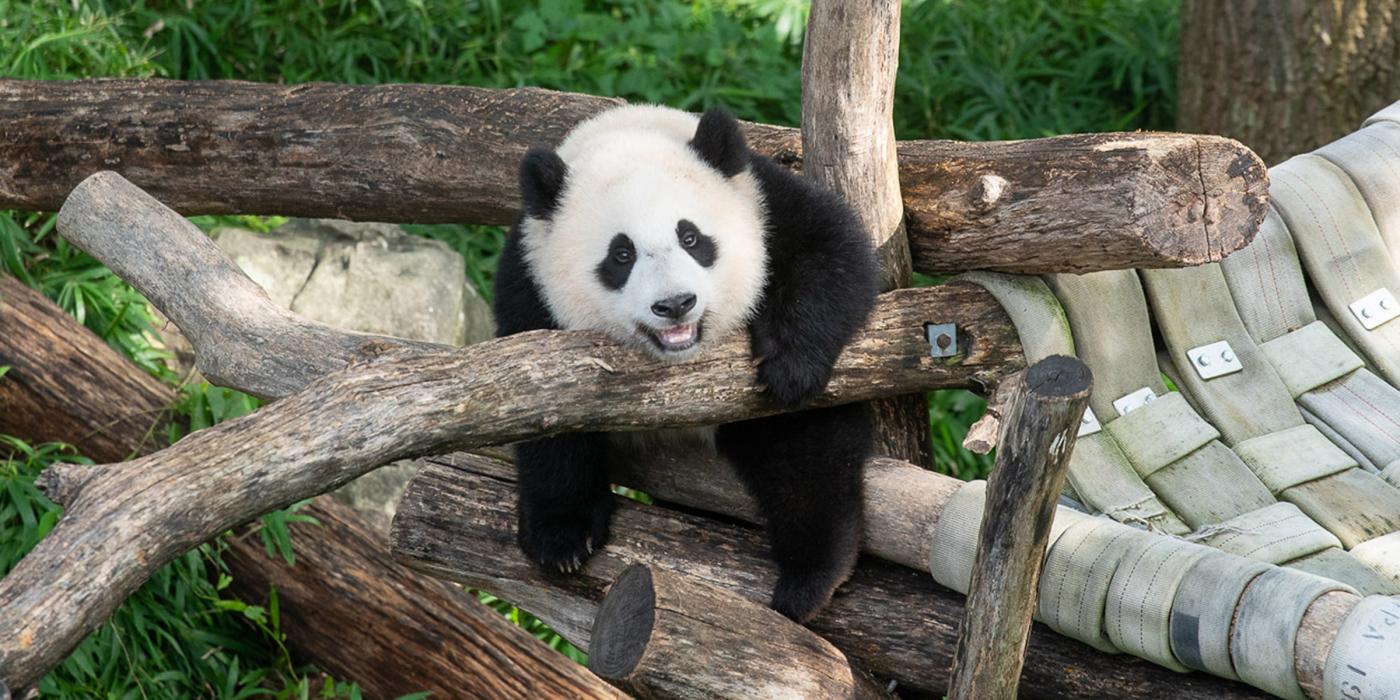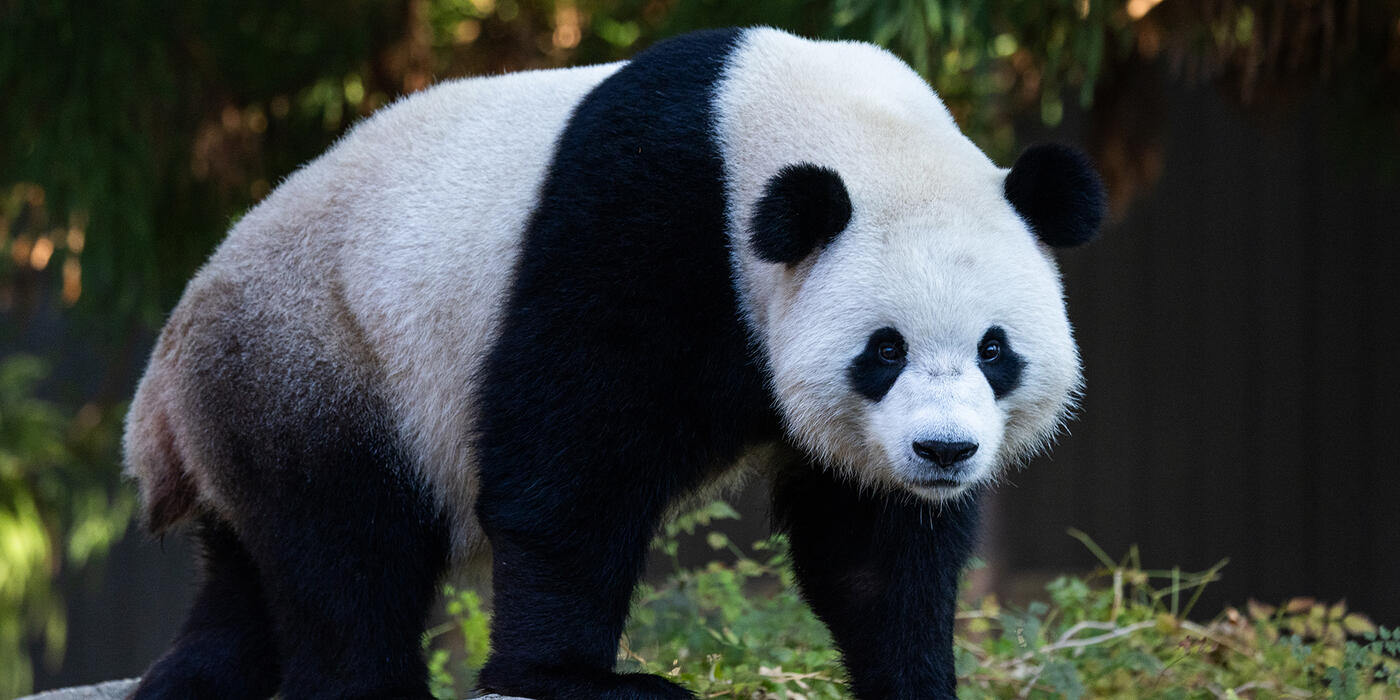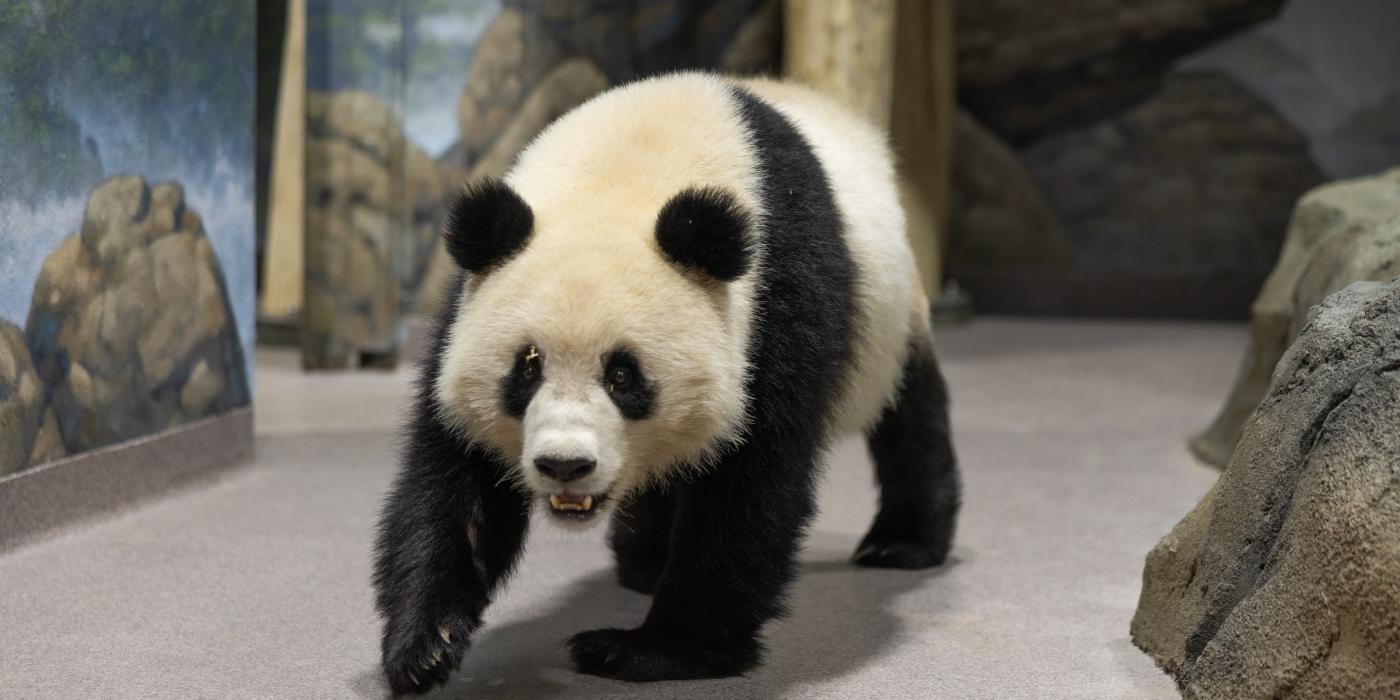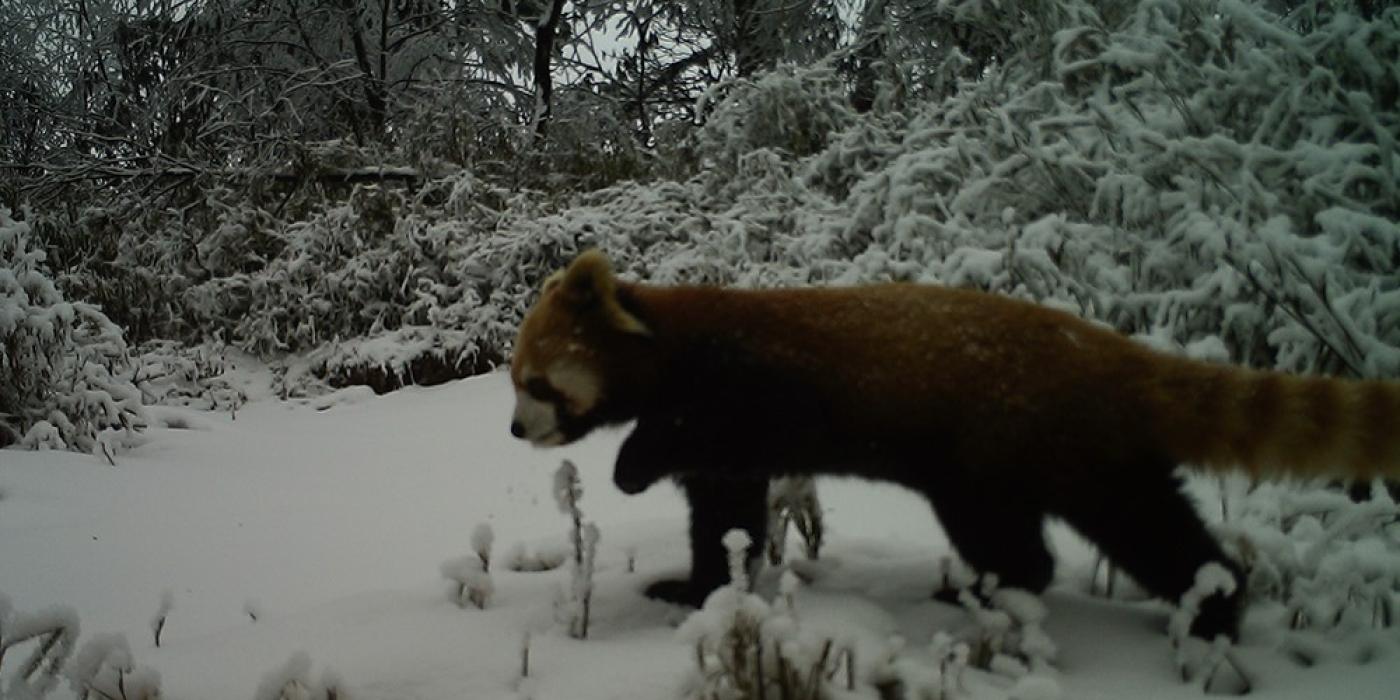50 Panda Facts to Celebrate 50 Years of Giant Pandas at the Smithsonian's National Zoo
The Smithsonian's National Zoo has been home to giant pandas for 50 years! Enjoy these 50 fun facts in honor of the occasion.
- The Zoo’s first pandas, Ling-Ling and Hsing-Hsing, were a gift from Chinese Premier Zhou Enlai to the American people in 1972 after First Lady Patricia Nixon mentioned how much she loved them at a dinner in Beijing, China, earlier that year.
- Mei Xiang and Tian Tian, the Zoo’s adult panda pair, arrived in 2000. The pair and their cub will stay at the Zoo until 2023 through an agreement with China Wildlife Conservation Association.
- As few as 1,864 giant pandas live in their native habitat, while another 600 pandas live in zoos and breeding centers around the world.
- Pandas are no longer an endangered species, thanks in part to Smithsonian research! Scientists and conservationists have worked to restore the giant panda’s habitat and increase breeding in human care. Giant pandas are still considered a “vulnerable” species.
- Though there are many theories, scientists are not certain why giant pandas have their distinctive black-and-white markings.
- Pandas are solitary animals but will vocalize during social interactions. They sometimes chirp, honk, bleat, chomp and bark.
- Pandas communicate through scent marking throughout their habitat and territory.
- Giant pandas have a "pseudo thumb," formed by an elongated and enlarged wrist bone covered with a fleshy pad of skin, which helps them grasp bamboo.
- A giant panda's digestive system is more similar to that of a carnivore than an herbivore, and much of what pandas eat is passed as waste.
- To make up for their inefficient digestion, pandas need to consume a comparatively large amount of food — from 70 to 100 pounds of bamboo each day — to get all their nutrients.
- The Zoo's Department of Nutrition grows bamboo at the Smithsonian Conservation Biology Institute. It also cuts bamboo from 20 stands located in the greater Washington, D.C., area.
- In the past, the Zoo accepted donations of bamboo from the public — but not anymore.
- A lot of science goes into feeding pandas and other animals! At the Zoo, giant pandas eat specially formulated nutritious biscuits, carrots, sweet potatoes and apples. Sweet potatoes are a favorite.
- Mei Xiang and Tian Tian’s favorite treat is an apple juice-flavored fruitsicle.
- Xiao Qi Ji’s favorite treat is a grape-flavored fruitsicle.
- On special occasions, such as birthdays, the pandas receive a huge frozen cake. Watch how one is made!
- Zoo staff never enter an enclosure with an adult giant panda. Like all bears, pandas are potentially dangerous.
- A panda’s jaws are so strong, they have a bite strength similar to that of a lion!
- Giant pandas reach breeding maturity between 4 and 8 years old. They can have offspring until their early 20s.
- Mei Xiang gave birth to Xiao Ji QI at age 22, making her the oldest panda to give birth in the United States — and probably the second oldest in the world (that we know of).
- Giant pandas are fertile for less than three days each year. Smithsonian scientists developed ways to predict that window of time to improve chances for pregnancy.
- Mei Xiang and Tian Tian have never successfully mated. All their cubs were born via artificial insemination.
- Giant pandas can experience pseudopregnancy. A pseudopregnancy mimics a real pregnancy, but instead of giving birth at the end of it, a giant panda's hormones and behaviors return to normal. Mei Xiang is believed to have had at least six pseudopregnancies.
- Mei Xiang has given birth to four cubs that survived to adulthood: Tai Shan (male born in 2005), Bao Bao (female born in 2013), Bei Bei (male born in 2015), and Xiao Qi Ji (male born in 2020).
- Panda pregnancies last between 90 and 180 days, with an average pregnancy lasting 135 days. This wide variation in gestation occurs because the fertilized egg usually floats freely in the mother's uterus before it implants and begins developing.
- Bears in the wild, including giant pandas, give birth in dens on a bedding of twigs, often in hollows of large logs or trees, or in caves. At the Zoo, keepers provide a small enclosure for pandas to “nest” in.
- Although females may give birth to twins, usually only one cub survives.
- Newborn giant panda cubs are born pink, hairless and blind. They weigh 3-5 ounces and are about the size of a stick of butter.
- At 1/900th the size of its mother, a giant panda baby is the smallest mammal newborn relative to its mother's size, except for a marsupial, such as a kangaroo or opossum.
- Giant panda mothers lick their cubs to help them urinate and defecate in their first weeks of life.
- Giant panda mothers gently pick up cubs with their mouths to move them.
- Giant panda mothers will breathe heavily on their cubs to keep them warm and humid.
- After giving birth, giant panda mothers don’t eat for a very long time! Their focus during this time is nurturing and protecting their cubs, rather than eating. Scientists have observed giant panda mothers in the wild go as long as one month without eating or drinking.
- After Xiao Qi Ji was born, Mei Xiang didn’t eat for 12 days.
- External genitalia in bears doesn't develop until the bear is several months old. The best, and most reliable, way to determine a bear cub's sex is through DNA analysis. Scientists from the Smithsonian Conservation Biology Institute's Center for Conservation Genomics obtain the DNA from a gentle cheek swab during a cub’s veterinary exam.
- Giant panda cubs may stay with their mothers for up to three years before striking out on their own. This means that a wild female, at best, can produce young only every other year.
- All giant panda cubs born at the Smithsonian’s National Zoo depart at around 4 years old to join breeding programs in China.
- Male pandas are not involved in the care of their cubs. Fathers and their cubs may never encounter each other in the wild.
- Scientists are not sure how long giant pandas live in the wild, but it is shorter than panda lifespan in zoos. They estimate that lifespan is about 15-20 years for wild pandas and about 30 years for those in human care. Chinese scientists have reported zoo pandas as old as 38.
- The Smithsonian’s National Zoo's giant panda Hsing-Hsing died at age 28 in 1999.
- The giant pandas at the Zoo have air-conditioned grottos and misting sprays in their outdoor enclosure so the pandas can stay outside all summer long, if they choose to.
- Giant pandas and red pandas are not as closely related as their names suggest. Red pandas are actually more closely related to raccoons than to giant pandas!
- The Smithsonian National Zoo's Giant Panda Cams have been viewed more than 100 million times.
- The Zoo’s Giant Panda Cam program launched in 1999 and continues to this day, with about 40 cameras operating at any given time.
- Volunteers operate these cameras and choose the two best views to share with the public via the Giant Panda Cam.
- Smithsonian scientists have trained more than 1,500 students and professionals in China on techniques for studying and conserving giant pandas and their habitat.
- Smithsonian scientists have produced more than 150 papers on groundbreaking biological and ecological discoveries related to giant pandas.
- Smithsonian scientists created the framework for how pandas are bred to improve breeding success and genetic diversity. Zoos across the globe now use this same tool for other animals!
- The greatest threat to wild giant pandas is habitat loss. Smithsonian scientists and colleagues are working to restore bamboo forests in the Qinling mountains of China.
- Climate change threatens the giant panda’s habitat. Everyone can help make a difference by using water and energy more efficiently.
Related Species:




